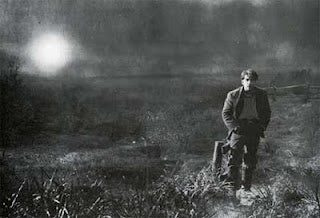Thoughts on a career in film (first published in November 2011)

Coming home after Ohio University (and leaving as head of its film society) in 1983, I found myself working in cigarette sales in Irvington, New Jersey. The work and the customers were somewhat devoid of the cultural leanings I had experienced in college and I longed for the days when I could rent a new 16mm print of MEET ME IN ST. LOUIS and run it again and again before the doors opened to the theater that evening. That's when I discovered the world of home video which was just reaching the suburbs at that time. There was a little store called Video Station in Summit, New Jersey and I would bicycle up a rather large hill (the reason for the town's name) every couple days to look at its wonders. There were VHS tapes of films by Truffaut, Pasolini and Kurosawa and I would take them home and watch them on the wonders of a big-screen 19" color television. And wonders of wonders, when I saved enough money, I was able to buy my very first video tape, Terrence Malick's DAYS OF HEAVEN for $79.95. Panned and scanned and with fairly bad sound, it was nowhere near my experience of seeing it for the first time at the D.W. Griffith Theater in New York ... but it was mine! I actually owned one of my favorite films! It has since become a tradition -- the first film that I ever bought on Laserdisc, then DVD and now on Blu-Ray.
But that's not where the story ends. There's a dirty little secret about the origins of the indie video store movement. Many of the indies (and that's all there was back then) were first opened by the same people who had tiny back rooms behind "legitimate" stores. They offered 16mm, 8mm and Super 8 movies of a different form of foreign film. These films all promised to be of Scandinavian origin and of dubious moral value -- hence their attraction to the populace. These owners around the country, of course, were the first to recognize the hunger of people to watch films in the privacy of their own home and they did not differentiate between the wonders of Powell-Pressburger and the Mishkin Brothers.
So here I was, rummaging through racks of foreign and indie films several times a week, completely unaware there was more stock in the basement below. And since I was living with my parents (and sporting a fairly un-sporting lifestyle as it were), it wouldn't have mattered anyway. But the young clerks at Video Station were film buffs like me and knowing of my 16mm past, suggested that there were films in the basement. The owner was selling off his entire collection of prints at bargain prices because VHS had taken over. And further, it seems that somehow, the owner had many years previously received a shipment of films that were totally worthless and they were taking up valuable storage space. Rather than BEDTIME FOR BRUNHILDE (a title I imagine, but it could very well have existed), there were 16mm prints of BIRTH OF A NATION, INTOLERANCE, CABINET OF DR. CALIGARI, SUNRISE and a couple short films in 35mm. Since I was a favored customer (and remember that membership cost $79.95 a year so you could rent VHS tapes at bargain $4.95 rate), I could have two as presents. I immediately took SUNRISE, which turned out to be an exquisite print from MoMA's original material printed in the 1940s, and CALIGARI. Then I begged them to give me the short films as well. They were 35mm nitrate prints showing the building of St. Thomas Church in NYC. I don't know why I wanted them, but they were 35mm and I had never held nitrate before!
The 35mm prints were immediately donated to MoMA. I still remember taking them on a bus to NYC, terrified that I was going to blow it up by a sudden jolt -- the misperceptions on nitrate were quite extensive back then. However, those 16mm prints of SUNRISE and CALIGARI remained with me and it sparked my interest in film preservation. Due to that rather "interesting" owner of Video Station, a life of abject poverty, vinegar syndrome and dealing with carcinogenic chemicals was started that day.











